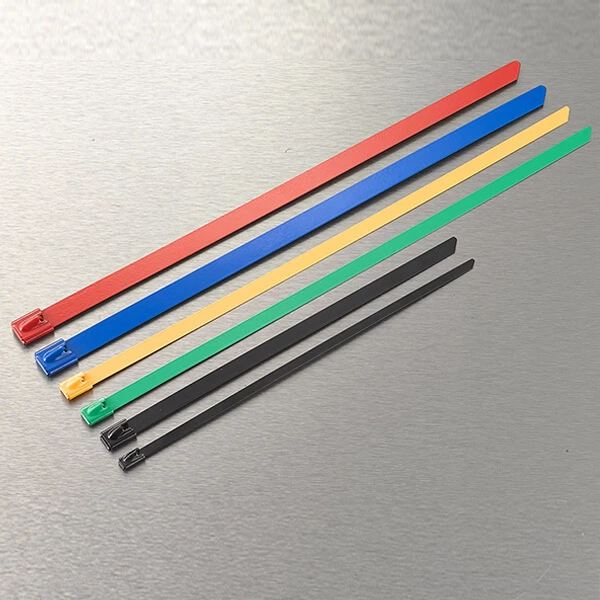Comparison And Classification Of Stainless Steel Cable Ties And Nylon Cable Ties
As we all know, cable ties have become a very important binding material in daily life and industrial production. It can be said that it is widely used in all walks of life. According to the material it is made of, it can be mainly divided into Stainless Steel Cable Tie and nylon cable ties (also known as plastic cable ties). So do you know what the difference is between these two types of cable ties? Let's talk about the comparison and classification of the two.
Nylon cable ties appeared relatively early, and were invented around the 1950s. At the beginning, its scope of application was relatively narrow, but because it is easy to use and low cost, after many years of promotion and development, it has been widely accepted by many industries.
Although traditional nylon cable ties have the advantages of easy use and low cost, they also have many disadvantages. For example:
1. Low tensile strength.
It is mainly suitable for wiring, and only needs to bundle the wire harnesses together, but it is not suitable for places with high tension requirements, because its tension is relatively small and can only withstand tens of kilograms of tension.
2. Short service life.
Nylon cable ties are generally suitable for use in indoor environments. If used in high temperature, low temperature, high humidity and outdoor environments with strong ultraviolet rays, they are prone to aging. Therefore, long-term use cannot provide good safety. Therefore, its service life is short.
3. Limited scope of use.
Nylon materials cannot be used in extremely low or ultra-high temperature environments.
Due to these defects of nylon cable ties, stainless steel cable ties made of stainless steel materials came into being. Compared with nylon cable ties, it has the following advantages:
1. High tensile strength.
Its pulling force can reach more than 1.5 tons, and there are many different sizes and specifications to choose from depending on the use environment;
2. Long service life.
Since stainless steel has different grades, the service life of those high-grade stainless steel can be more than ten years, and even in relatively harsh environments, it can maintain good antioxidant and corrosion resistance.
3. Wide range of use.
It can adapt to different use environments.
Since stainless steel can be mainly divided into three categories: austenitic stainless steel, ferritic stainless steel and martensitic stainless steel, the cable ties made from them can also be divided into three categories. Among them, stainless steel of different materials has different internal components, resulting in different performance of cable ties.
The chromium content in austenitic stainless steel is 16%-26%, and the nickel content is less than 35%, so it has very good corrosion resistance, but it cannot be strengthened by heat treatment. It is a non-magnetic material, and 304 is its more common type.
The chromium content in standard ferritic stainless steel is 10.5%-27%, and it does not contain nickel. Since the carbon content is less than 0.2%, it cannot be strengthened by heat treatment during processing, so it is suitable for use in occasions where corrosion protection is not required.
Martensitic stainless steel not only contains 11.5%-18% chromium, but also contains less than 1.2% carbon, and contains a small amount of nickel. It can be strengthened after heat treatment and has good corrosion resistance.
Whether it is nylon cable ties or stainless steel cable ties, they have their own advantages and disadvantages. In actual application, comprehensive consideration should be given to maximize their strengths and avoid their weaknesses.



